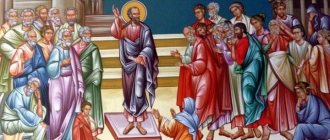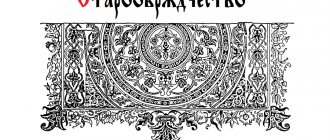On February 6, 1918, the Bolshevik government adopted a decree introducing the Gregorian calendar in the country.
Over the centuries-old history of Russia, the calendar and chronology system have changed more than once. But only once did the country, which was undergoing its largest and most brutal transformation, from the Russian Empire to Soviet Russia, wake up, having lost thirteen days of its life. This happened on the night of February 14, 1918 - the first of the days that Soviet citizens had to live according to the new Gregorian calendar. The decision to introduce it on the territory of the RSFSR was made at a meeting of the Council of People's Commissars on February 6 (January 24, old style) 1918, four days after the church, which continued to live according to the Julian calendar, was also separated from the state by decree.
Characteristic
In the Julian calendar, the length of the tropical year is taken to be 365 1/4 days = 365.25 days. This gives an error of 1 day after about 128 years. Approximation of 365 1/4 is achieved by introducing one leap year every 4 years. In the Julian calendar, every year whose number is divisible by 4 without a remainder is a leap year.
However, this rule was not observed in the first years after the introduction of the Julian calendar in 45 BC. In the early years of the calendar, due to calculation errors, every third year was a leap year. Leap years were: 45 BC. (possibly), and the following years - 42, 39, 36, 33, 30, 27, 24, 21, 18, 15, 12, 9 BC; 8, 12 AD and every fourth year thereafter.
Between 9 B.C. and 8 AD (or, according to some sources, between 12 BC and 4 AD) there were no leap years. This period without leap years was established by decree of Emperor Augustus to correct the effects of the excess of leap years in the previous period. Thanks to this, he was immortalized in the calendar, since the eighth month was named after him.
Interesting fact: although the method of counting years from the (official) year of Christ's birth was not used until the century, due to a lucky coincidence, Julian leap years coincided with the years after Christ's birth in multiples of four.
Failed reforms
By the beginning of the 19th century, life according to the “old style” began to cause noticeable inconvenience to many subjects of the Russian Empire, primarily to those who, due to duty or personal reasons, were forced to regularly interact with Western European partners. In 1830, the St. Petersburg Academy of Sciences made a proposal to switch to the Gregorian calendar, but this proposal received a negative assessment from the then Minister of Public Education, Prince Karl Lieven. Emperor Nicholas I supported him, and the project was rejected. Three decades later, in 1864, the German astronomer Johann Mädler, who then served as a professor at the University of Dorpat in the Baltics, proposed that the Russian government carry out a calendar reform without changing the chronology itself, but by adjusting the calendar based on his extremely accurate assessment of the year. Professor Medler proposed changing the cycle of three ordinary years and one leap year to a cycle of 128 years, in which there were 31 leap years for 97 ordinary years. The project was rejected by both secular and ecclesiastical authorities, twice: the second time, the Medler calendar was proposed to be introduced in 1899 by a commission organized at the initiative of Dmitry Mendeleev at the Russian Astronomical Society, but this initiative also failed.
Minister of Public Education of the Russian Empire, General of the Infantry, His Serene Highness Prince Karl Lieven
Source: liveinternet.ru
Nevertheless, inconveniences in using the calendar, which did not coincide with the pan-European calendar, accumulated, and the Russian government had to take local measures to overcome them. In particular, even before the First World War, the Gregorian calendar was used for astronomical and meteorological observations, was adopted in the military and commercial fleet, and was used in various situations by the ministries of foreign affairs, finance, communications and internal affairs. It was especially inconvenient for historians: the difference between the calendars accumulated gradually, and dates had to be translated with extreme caution (see Table 2). But for the majority of the Russian population, the discrepancy between the Julian and Gregorian calendars remained invisible. Life in the Russian outback was still largely focused on the church schedule of the year, to which the calendar in force in the country was fully consistent. In order to break this connection and force Russian subjects to stop calculating the year according to the Orthodox calendar, it took the October Revolution with its desire to “destroy the entire old world to the ground.”
Story
The Julian calendar was introduced in the Roman Republic by Julius Caesar, from whom it received its name, in 45 BC. It was widely used in lands that adopted the Roman tradition until 1582, when first Roman Catholic, and later other lands began switch to the Gregorian calendar. Greece (in 1924) and Turkey (in 1926) were among the last to abandon the Julian calendar at the state level (for more information about the time and method of transition of different countries, see the article on the Gregorian calendar).
The Orthodox Church adopted the Julian calendar, which was dominant in the Roman state, which remained ubiquitous in church use until 1923. At that time, the Constantinople Congress of representatives of a number of local Orthodox Churches, convened by Patriarch Meletius IV of Constantinople, among other innovations, decided to “correct” the Julian calendar by temporarily adopting the “New Julian calendar,” coinciding with the Gregorian until 2800. This decision did not find universal recognition - immediately after the Congress, only three autocephalous Churches abandoned the Julian calendar: Constantinople, Romania and Greece, which switched to the New Julian calendar, while the non-canonically separated autonomous Finnish Orthodox Church introduced the Gregorian calendar. Thus, since 1923, the so-called The calendar issue is the precarious coexistence of three calendars, which has been troubling church life since the beginning of the 21st century. The massive adherence of believers to the Julian calendar led to the fact that transitions to the “new style” were often accompanied by large-scale protests and the formation of schismatic “Old Calendar” movements. As a result, the hierarchy of several local Churches, after an attempt to introduce a “new style,” decided to restore the Julian calendar; in other cases, the coexistence of different styles within the same local Church was allowed.
Refusal and return to the Julian calendar of local Churches
- Orthodox Church of Constantinople:
- refusal from March 10, 1924 (patriarchal and synodal charter) [1]
- refusal in 1926
- refusal in 1948
- refusal October 2, 1923
- return on November 8, 1923 due to the failure of the Constantinople Congress and the rejection of the “new style” by the majority of believers
- refusal in 1928
- return a few months later due to the rejection of the reform by the people and the majority of priests
- refusal in 1924
- refusal on December 19, 1968 (according to the announcement on July 18 of that year), “for ecumenical purposes” [2]
- refusal in March 1923
- refusal on April 12, 1924, while allowing individual parishes to retain the Julian calendar
- return on June 15, 2014 (according to the synodal resolution of March 18 of that year) “due to the fact that the majority of parishes of the Polish Church (96%) celebrate holidays according to the old style (Julian), and at the requests of believers” [3]. At the same time, in those parishes where there was such a need, the new style could be preserved.
- refusal in the 1970s [4], while allowing individual dioceses [5] and parishes to retain the Julian calendar
Transition gradual or instantaneous
For the first time, the issue of switching from the Julian to the Gregorian calendar was brought up at a meeting of the Council of People's Commissars on November 16 (29 according to the current style) 1917 - just three weeks after the October Revolution. It was decided to postpone the issue until real projects for such a transition were proposed, which obviously required significant efforts. The Council of People's Commissars returned to the topic of a new calendar for the second time two months later, on January 23 (February 5, according to the present day), 1918, when it was presented with two proposals on how to introduce the Gregorian calendar in Soviet Russia. One of them, developed by the People's Commissariat of Public Education, assumed a gradual transition over 13 years, in which each new year the difference between the calendars would be reduced by one day. The second project, which was supported by Assistant People's Commissar for Foreign Affairs Georgy Chicherin, envisaged an immediate transition, which in one day would equalize the dates inside and outside Russia.
Chairman of the Council of People's Commissars Vladimir Lenin, 1918
Source: it.rbth.com
The Chairman of the Council of People's Commissars, Vladimir Lenin, warmly supported just such an “urgent” option. On the one hand, it made it possible to immediately eliminate discrepancies in dates, which was important from the point of view of the unity of the world proletariat and the export of the revolution. On the other hand, such a transition dealt another significant blow to the positions of the Russian Orthodox Church, already separated from the state (the decree on this came into force on that very day), and made it possible to quickly break the connection between it and the majority of the population of Russia, which was one one of the main tasks of the Bolsheviks. The next day, February 6, the decree on the transition to the Gregorian calendar was finally adopted at a meeting of the Council of People's Commissars. Two days later, it was signed by the Chairman of the Council of People's Commissars, Lenin, and the next day, February 9 (January 27, O.S.), 1918, the document was published and came into force.
In modern ecclesiastical use
Nowadays the Julian calendar is used:
- Everywhere in the Jerusalem, Georgian and Serbian Orthodox Churches.
- Overwhelmingly in the Russian (with the exception of individual parishes in Western Europe) and Polish Orthodox Churches.
- Depending on the parish structure in the Czechoslovak and American Churches, where the New Julian one is also used.
- In a number of jurisdictions, monasteries and parishes of Constantinople (including Mount Athos, the Ukrainian Orthodox Church of America, the Monastery of St. Irene Chrysovalantou in Astoria and its affiliated institutions, etc.) and Romanian (including the Metropolis of Bessarabia) Churches.
- In all local Churches except Finland for calculating Paschal.
Which calendar is more accurate?
The debate about which calendar is Gregorian or Julian, or rather, does not subside to this day. On the one hand, the year of the Gregorian calendar is closer to the so-called tropical year - the period during which the Earth makes a full revolution around the Sun. According to modern data, the tropical year is 365.2422 days. On the other hand, scientists still use the Julian calendar for astronomical calculations.
The goal of the calendar reform of Gregory XIII was not to bring the length of the calendar year closer to the length of the tropical year. In his time, there was no such thing as a tropical year. The purpose of the reform was to comply with the decisions of ancient Christian councils on the timing of Easter celebrations. However, the problem was not completely solved.
The widespread belief that the Gregorian calendar is “more correct” and “advanced” than the Julian calendar is just a propaganda cliche. The Gregorian calendar, according to a number of scientists, is not astronomically justified and is a distortion of the Julian calendar.
Introduction
It is customary to call a calendar a certain system of counting long periods of time, dividing them into separate shorter periods (years, months, weeks, days). The word “calendar” itself comes from the Latin words “caleo” - to proclaim and “calendarium” - debt book. The first recalls that in Ancient Rome the beginning of each month was announced separately, the second - that on the first day of the month it was customary to pay interest on debts.
We are convinced that time flows by observing the movement and development of material bodies around us. It turned out that time intervals can be measured by comparing them with periodically repeating phenomena. There are several such periodic phenomena in the world around us. This is, first of all, the change of day and night, which gave people a natural unit of time - the day, then the change of phases of the moon, occurring during the so-called synodic month (from the Greek synodos "- rapprochement; this meant the monthly rapprochement of the Moon and the Sun in the sky, when in this case, sometimes the Moon finds the Sun in the sky - a solar eclipse occurs) and, finally, a change of seasons and the corresponding unit of measurement - the tropical year (from the Greek "tropos" - turn: tropical year - the period of time after which the height of the Sun above the horizon is noon, having reached its maximum value, decreases again).
The difficulties encountered in developing a calendar are due to the fact that the length of the day, the synodic month and the tropical year are incommensurable with each other. It is therefore not surprising that in some places people counted time in units close to the length of the synodic month, assuming a certain (for example, twelve) number of months in a year and not taking into account the changing seasons. This is how lunar calendars appeared. Others measured time in the same months, but tried to correlate the length of the year with the changing seasons (lunar-solar calendar). Finally, the third took the change of seasons as a basis for counting days and did not take into account the change of phases of the Moon (solar calendar) at all.










